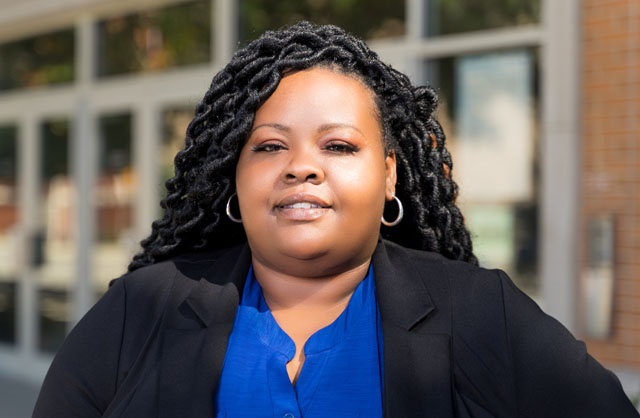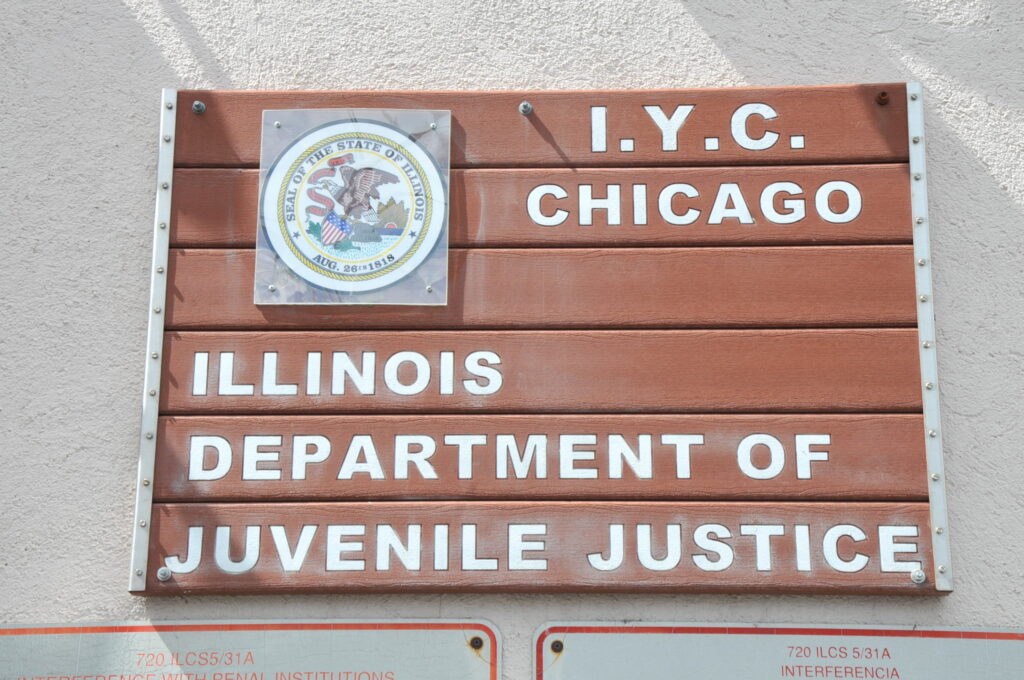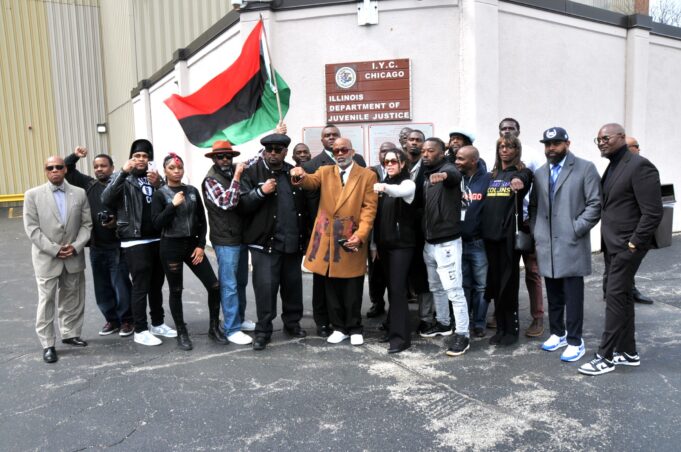Activists put spotlight on harsh conditions in juvenile detention center
CHICAGO—Several dozen community activists and a state legislator protested April 12 outside the Illinois Youth Center-Chicago (IYC) for boys, alleging deplorable, life-threatening conditions and subjecting youth offenders to extreme mental stress.
The facility houses juveniles under court-ordered sentences. According to IYC school principal Michael McGrone, 135 inmates are housed there. Hip hop mogul-entrepreneur Damon Dash joined Mr. McGrone at the rally.
Complaints included bathrooms and showers covered in mold, a “warehouse” facility with few windows, leaving some youths to be confined for over a year without access to outdoors and green spaces, and physical abuse.
“This is Modern day, medieval torture,” said Mr. Dash. “Some of these kids haven’t been outside in over a year. These kids are traumatized. I just need to know why?”

Mr. Dash has walked through the facility several times, once with State Senator Lakesia Collins (D-5), who attended the rally. Staff refused them entry on this day.
Sen. Collins said she was appalled by the conditions of the facility and the mental anguish she witnessed from some of the inmates. “You have kids in there pleading just to get outside and get some sun and air,” said Sen. Collins, a mother with three sons. “A lot of them have bags under their eyes.
“We saw exposed wires, we saw mold and heard stories about the rodents,” she said. “It’s inhumane.”
Principal McGrone recounted stories of a child having braids pulled out of his head by guards. “I thought he had ringworms,” he said, adding that guards also beat a youth using handcuffs as brass knuckles.
Mr. McGrone said the state pays $1 million annually to rent the decrepit facility, and has a budget of $147 million, which Sen. Collins described as “one of the lowest in the state.”
Principal McGrone complained that inmates are given drugs by physicians who have only seen their patients via Zoom. He expressed concerns that some are taking sedatives while also taking psychotropic medications. And while one worker has been suspended, Mr. McGrone knows he could be targeted as a “whistleblower.”
“I can assure you there will be some repercussions for me … but I won’t allow our children to be abused, pillaged on my watch. Everybody that came through this building left in tears,” he said.
Activists demanded an oversight committee composed of community-based groups and not-for-profit organizations be formed to have input in monitoring conditions at the facility,
In a statement, Illinois Governor JB Pritzker’s spokesperson Dominique Newman said the administration “takes seriously” the allegations made and is “aggressively working to resolve concerns” at IYC. The statement said the agency has hired vendors to professionally deep clean and provide mold and mildew analysis.
Wrong model of incarceration
While there has been a significant decrease in juveniles held in detention facilities over several decades—from 109,000 in 2000 (the highest year) to 25,000 in 2020—the disparities continue, according to the Sentencing Project, an advocacy group for the incarcerated.

The placement rate for White juveniles was 72 per 100,000 youth under age 18. For Black youth, the rate was 315 per 100,000 in 2019.
The Sentencing Project further states that Black youth are more likely to be arrested, detained and treated more harshly as they move through the system than their White counterparts.
White youth are likely to be diverted from the normal process. If convicted as a juvenile, White youth are more likely to receive probation or informal sanctions, whereas Black youth are more likely to be incarcerated, the Sentencing Project noted.
Advocacy groups overwhelmingly agree that the model of incarcerating juvenile offenders is wrongheaded.
The Justice Law Center (JLC) argues against solitary confinement, strip searches, shackles, and chemical sprays that are sometimes used. These abusive practices cause physical injuries, psychological harm, and interrupt healthy development.
Incarcerated youth also face physical and sexual violence, compounding the trauma imposed by their isolation and separation from their families, friends and communities, the JLC notes.
A December 2023 ProPublica-Capitol News Illinois report highlighted the closure of the Franklin County Juvenile Detention Center as a “facility in crisis.”
Franklin County did not provide the required mental health care, schooling and recreation for the children in custody, and youth were locked in their rooms for up to 24 hours for behavioral infractions or because of short staffing, the report noted.
Inmates were tased, pepper sprayed, forced into isolation for days at a time and denied access to medications and mental health treatment, ProPublica wrote. Young people received little or no schooling despite state and federal laws mandating that the youth receive educational services while incarcerated. Two-thirds of those detained are Black teens, ProPublica reported.
What makes Illinois different from many other states is that no independent agency licenses or certifies the youth detention centers, they reported.
Types of juvenile detention center ownership vary—private, county, local, state and federal, said Gail D. Mumford of the Annie E. Casey Foundation (AECF), a philanthropic organization that focuses on children.
AECF’s 2014 Juvenile Detention Facility Assessment report offers analysis and best practices for such institutions. Currently being updated, standards range from detention intake, population management, health assessments, family engagement and recreation to staffing and institutional atmosphere.
“Standards build upon each other,” she said, adding that good medical care paired with good programming and safety produce better physical and emotional outcomes.
Past standards were written by lawyers and the lens bent toward legal issues. Updated standards will include more voices, including those of young people, she said.
“It’s always a constant struggle to keep institutions up to standard … things creep up. It’s always a work in progress. We must find what drives behaviors that bring our youths to the justice system. There’s no magic bullet,” she said.
Still, there’s the ever-present stories about abuse and resistance to change:
A bill written in response to reports of abuses at Tennessee juvenile facilities will be sent to committee for “summer study,” Nashville’s TV 5 reports. The bill allegedly was derailed due to large political contributions from the facility’s owner.
Dozens of former state workers are accused in nearly 1,200 lawsuits alleging six decades of abuse at the Manchester, N.H., facility, the Associated Press reports. One complaint alleges youth were “sporting black eyes, swollen faces and bleeding genitals.”
A state psychologist is accused of sexually abusing numerous underage victims at a New York State juvenile detention center going back years.
The Honorable Elijah Muhammad, the Eternal Leader of the Nation of Islam, and his National Representative, the Honorable Minister Louis Farrakhan, have consistently warned that Black youth, as the strength of the Black nation, are targeted for destruction.
“Our fearless Black youth are ready to move for liberation. It is not necessarily that they have to move the giants or Caucasian people who have become like a mountain in the eyes of Black people, but, like Jesus said, ‘If you have faith the grain of a mustard seed, you could say to the mountain, be removed.’
God wants you to go, and if you had faith the grain of a mustard seed, you could say to the mountain, ‘be removed.’ And that’s the difference with our youth today,” Minister Farrakhan said in a 1992 message titled, “Black Youth: What Must Be Done.”
Lionel Muhammad, a prison reform advocate who spent 23 years incarcerated, told The Final Call: “Prison is an inhumane condition to be in. My concern is the condition of the people in the prison … so they don’t return. We can tear the building down if there’s nobody there.”













